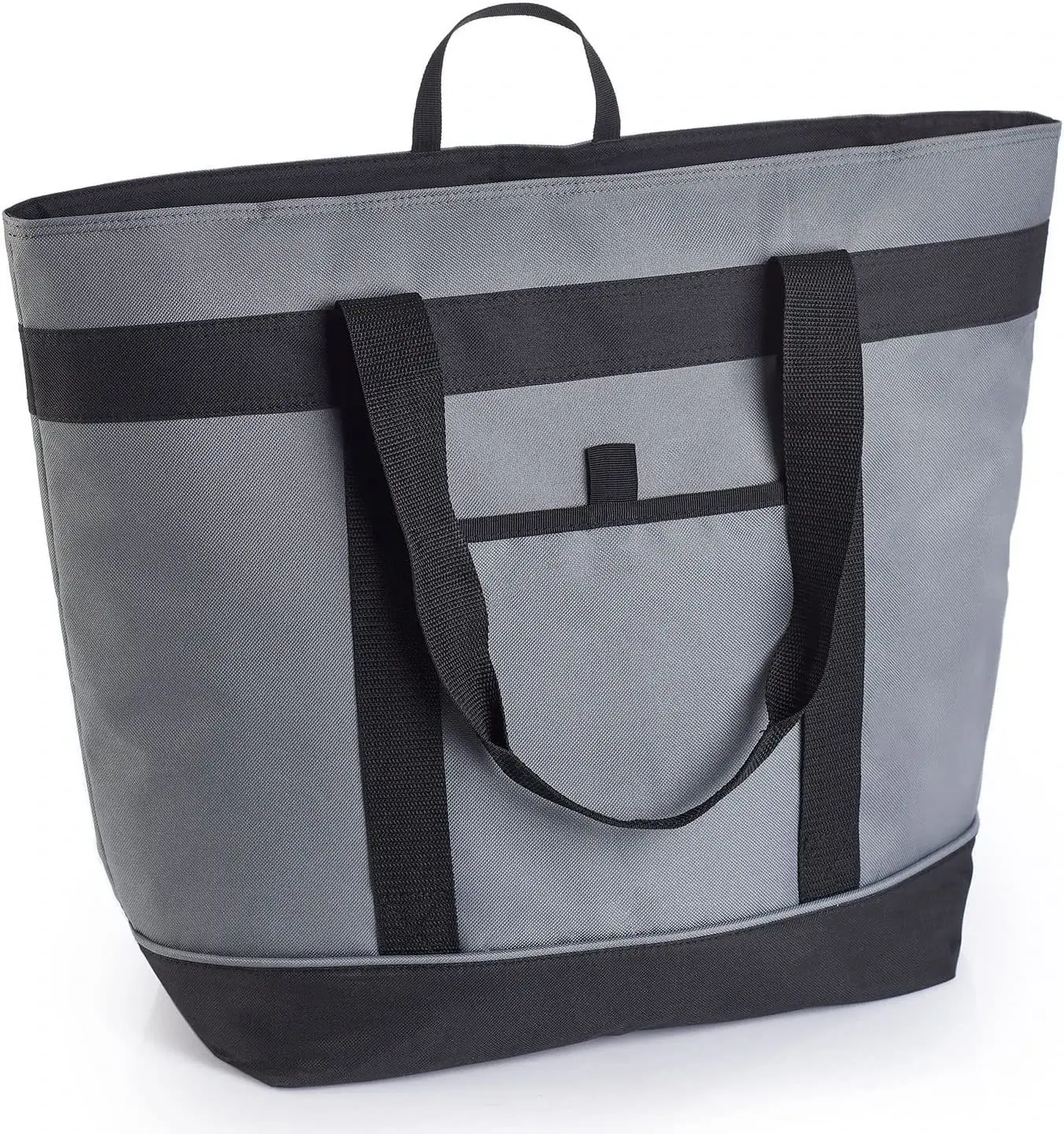Brand Y's Guide to Choosing the Best Lunch Cooler Bag
Choosing high-quality lunch cooler bags is essential for maintaining the quality and safety of your food and drink, especially for those who need to carry meals for extended periods. These bags are designed to keep contents at optimal temperatures, thereby extending the shelf life of perishable items and reducing food waste. Superior materials and construction ensure durability and resistance to water, making the bags suitable for various conditions and scenarios. Additionally, features like easy cleaning, portability, and multiple compartments enhance user convenience, catering to the diverse needs of office workers, students, and outdoor enthusiasts. Moreover, the environmental benefits of these bags, including reduced food waste and lower carbon footprints, further emphasize their importance. Investing in high-quality lunch cooler bags is not only practical but also a step towards sustainable living.
Key Features to Consider When Choosing a Lunch Cooler Bag
When selecting a lunch cooler bag, consider the following key features for optimal performance:
- Dual-Layer Insulation: This includes vacuum insulation panels or multiple fabric layers, ensuring temperature retention and keeping cold items cold and hot foods warm for extended periods.
- Moisture-Proof Lining: Essential for preventing liquids from seeping in and maintaining hygiene, ensuring food stays fresh.
- BPA-Free Materials: Safeguarding users from harmful chemicals, making these bags safe for daily use and long-term storage.
- Multiple Compartments and Pockets: Efficiently organizing contents, whether you need separate spaces for drinks, snacks, or utensils.
- Durable and Lightweight Construction: Resistant to tears and punctures, yet portable and easy to carry, making them suitable for various activities and daily use.

Types of Lunch Cooler Bags and Their Usage Scenarios
Explore the different types of lunch cooler bags and their ideal usage scenarios:
- Reusable Bags: Made from materials like silicone, canvas, and insulated fabric, offering long-term durability and better insulation. These are eco-friendly and cost-effective, although they come with a higher initial cost.
- Disposable Bags: Suitable for short-term or occasional use, these bags are convenient and easy to dispose of after a single use. Lightweight and affordable, they are ideal for picnics and outings where convenience is key.
- Insulated Fabric Bags: Providing excellent insulation, they effectively maintain the temperature of foods and drinks. Durable and suitable for school and work settings, they ensure meals stay fresh throughout the day.
- Silicone Totes: Known for their flexibility and easy-to-clean surfaces, silicone lunch cooler bags are versatile and can handle a variety of contents. They offer reliable insulation and a long lifespan.
- Eco-Friendly Options: Made from biodegradable or recycled materials, these bags are environmentally sustainable. Examples include plant-based plastics, recycled fabrics, and natural fibers like cotton or hemp, enhancing both practical and eco-friendly aspects.
Choosing the Right Brand: Reviews and Comparisons
Selecting the right brand requires considering both reviews and comparisons with other brands. Consumers often prioritize durability, temperature retention, and ease of cleaning. Reviews provide insights into real-world performance, aiding in the identification of reliable features. Direct comparisons between brands highlight specific features and price points, leading to more informed decision-making. Additionally, the material composition significantly influences the bags performance. Insulated foam is effective for temperature retention but may lack durability, while neoprene offers a balance of insulation and durability. Rubber provides lightweight and durable construction but may not insulate as well, and cloth is easy to clean but might not retain cold temperatures as effectively. Combining materials, such as using neoprene for durability and insulated foam for temperature control, can create a lunch cooler bag that excels in all areas. Thoughtful design elements, like insulated compartments, touch-fastening openings, and sturdy handles, enhance usability and convenience. Understanding a brands approach and values is crucial, as it aligns with the needs and preferences of different consumer segments, whether they prioritize eco-friendliness, durability, or multifunctionality.
Maintenance and Cleaning Tips for Your Lunch Cooler Bag
To maintain and clean your lunch cooler bag effectively:
- Check for Damage: Periodically inspect the bag for any wear or tear that could compromise its integrity.
- Use Mild Soap: Clean the bag with mild, biodegradable soap and warm water. Avoid harsh chemicals like bleach, which can damage the materials or reduce the effectiveness of waterproof treatments.
- Air Dry Thoroughly: Allow the bag to air dry completely before storing it.
- Use Eco-Friendly Cleaners: Opt for natural cleaning solutions like vinegar and water for a greener option.
- Organize and Store Safely: Use insulated compartments and dividers to separate food items, ensuring freshness and minimizing the risk of bacterial growth. Place perishable items in temperature-controlled compartments with ice packs or gel packs for safe storage.
Maximizing the Benefits of a High-Quality Lunch Cooler Bag
To maximize the benefits of a high-quality lunch cooler bag, consider the following crucial features:
- Durability: High-quality materials like recycled fabrics, BPA-free plastics, and phase-change materials ensure the bag can withstand harsh outdoor conditions and provide long-lasting use. For instance, Yeti-style materials are known for their robustness, making the cooler bag ideal for extended adventures.
- Ergonomics: Thoughtful designs with adjustable handles and shoulder straps optimize carrying convenience, whether for long-distance or short trips. Comfortable and adjustable features ensure the user remains hands-free and can adjust the load according to needs.
- Insulation: Advanced insulation types, such as freezer-grip layers and biodegradable gel packs, maintain food and drink temperatures effectively. Innovations like phase-change materials not only stabilize temperatures but also reduce environmental impact.
- Smart Technology: Features like real-time temperature sensors and smartphone app notifications monitor and ensure the quality of food and drinks without constant supervision. Energy-efficient designs and solar-powered cooling options further enhance sustainability and functionality.
- Eco-friendly materials and designs, such as biodegradable labels and packaging, promote a circular economy. Brands that partner with recycling programs and offer incentives for returning used bags create a positive environmental impact and encourage sustainable behaviors.





